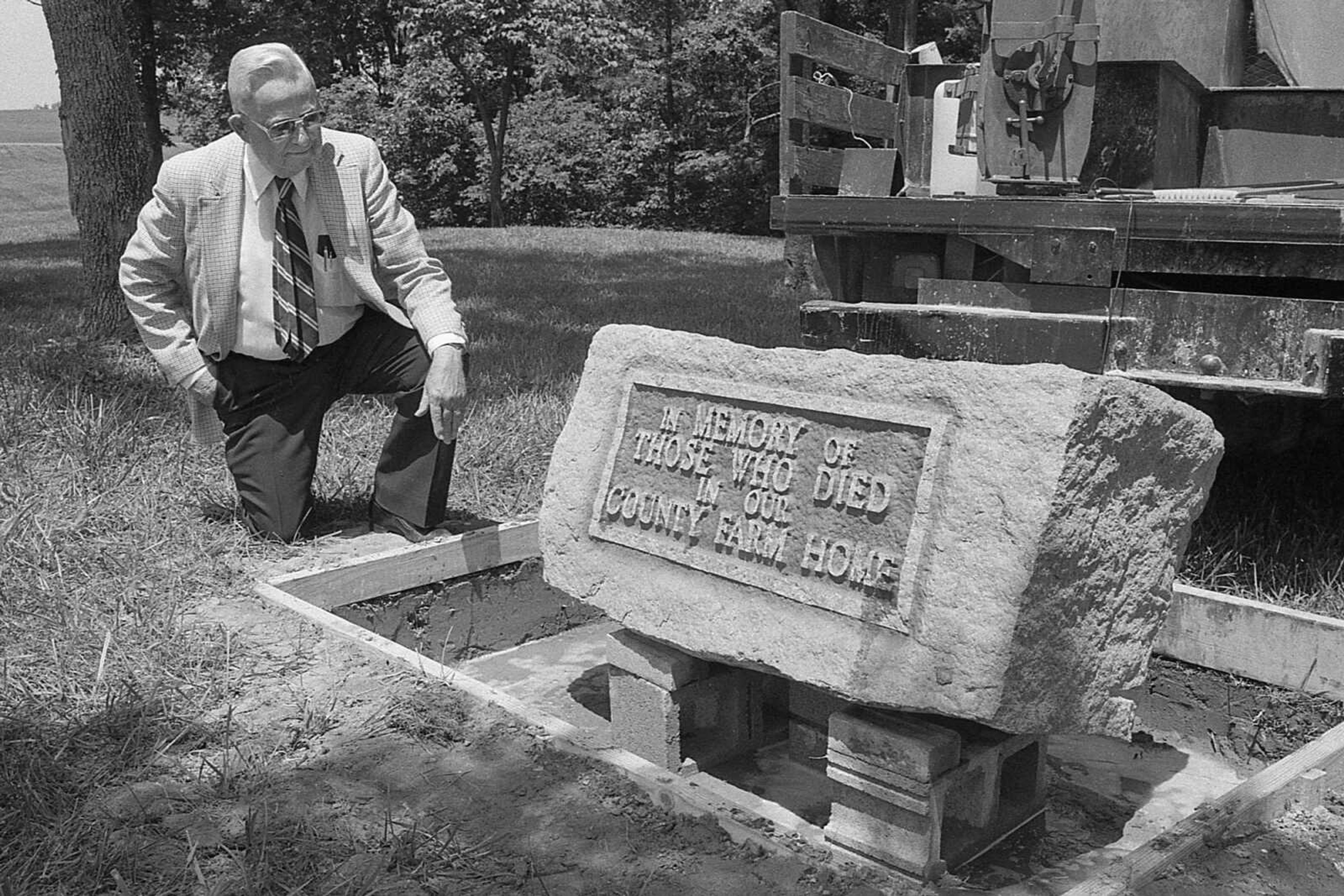Sometimes, finding a ledger at the Cape Girardeau County Archive Center leads to more questions than answers. When a researcher asked me about the ledger for the Cape County Poor Farm, or Home for the Friendless, that held true.
I hadn't known much about the poor farm before, just that as many counties in the 1900s did, Cape County had one. It was more or less where Cape County Park is now, for about 70 years, until 1956. After a series of other uses, the park was established in the 1970s.
The poor farm was intended as a place to give the indigent a place to work and be productive, as the practice before had been to place people who couldn't care for themselves with relatives or a third party, and include a stipend. Starting in the 1870s, the poor farm began accepting inmates, as they were known, and the ledger shows more than 1,800 entries. Some of those are for the same or similar names, roughly the same ages, which indicates that there were people who returned as seasons or their circumstances changed.
It's likely that more people came to the farm than were listed in the ledger, but there's no way of knowing.
The ledger also notes inmates' reasons for being at the farm. Among the pregnancies and homelessness are listed heart problems, poverty, insanity, pneumonia, blindness -- a truly varied list of afflictions and conditions. Some orphaned children were adopted -- noted by a scribble in the margin -- but many were sent to an orphanage in St. Louis.
The records show 19 births and 152 deaths having occurred there, but a book published by the Cape Girardeau County Genealogical Society on the County Home for the Friendless (revised in 1999) states that the records are incorrect, noting that one superintendent alone buried more than 300 bodies.
Regardless, the cemeteries were segregated, and two identical stone monuments honoring the dead now stand near the park's big pond -- one at shelter 3, one at shelter 10. The burials are unmarked, but findagrave.com lists 52 burials there as of Sept. 17. These cemeteries are also noted in the cemetery project books on file at the Archive Center.
None of the original poor farm's buildings still stand, and the gravel road that originally served the farm is gone. Kingshighway cuts through the former farm.
In all, 10 superintendents oversaw the poor farm between 1874 and 1956. Rules to operate the farm were first modeled on those of the Randolph County, Illinois, poor farm and were amended frequently.
After it was the poor farm, the property became the State Training Center for Handicapped Children, which occupied it for about 20 years until 1977.
Then the Cape County Senior Citizens Nutrition Center moved into the facility at the park. When it moved to the Civic Center on Broadway in 1986, the structure was demolished.
Few traces now remain of its poor-farm roots, unless you know where to look.
More about the poor farm, visit semissourian.com/blogs/flynch/entry/71420, semissourian.com/story/2812357.html and semissourian.com/blogs/flynch/entry/52111.
Connect with the Southeast Missourian Newsroom:
For corrections to this story or other insights for the editor, click here. To submit a letter to the editor, click here. To learn about the Southeast Missourian’s AI Policy, click here.










